-
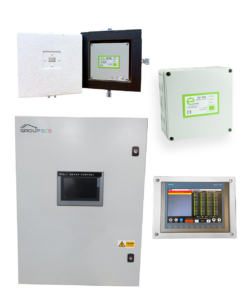
Addressable Fire and Smoke Damper Control System
From £6,123 Select options -
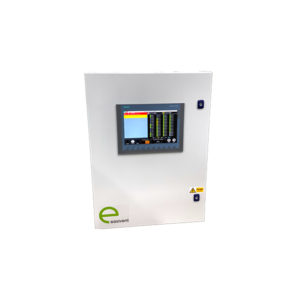
Damper Control Panel with 7″ HMI
£5,482.00 – £9,263.00 Select options This product has multiple variants. The options may be chosen on the product page -
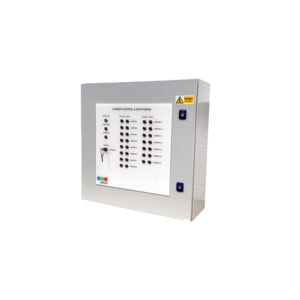
Damper control panel, 1 zone, 15 dampers
£2,860.70 / £3,432.84 incl. VAT Add to basket -

Damper control panel, 2 zones, 30 dampers
£3,100.00 / £3,720.00 incl. VAT Add to basket -
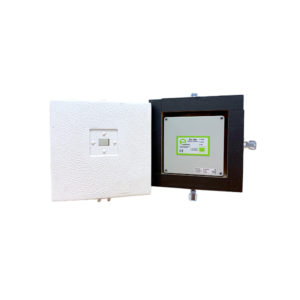
Damper interface panel with hotbox | 230VAC | 1.2A Output | EV-100-PC-OB-HBV
£675.56 / £810.67 incl. VAT Add to basket -
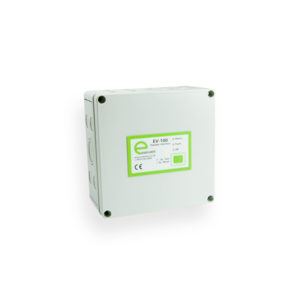
EV-100-PC Damper interface panel, 24VDC, 0.8A Output
£234.00 / £280.80 incl. VAT Add to basket -

EV-100-PC-HBV Damper interface panel with hotbox, 24VDC, 0.8A Output
£690.00 / £828.00 incl. VAT Add to basket -

EV-100-PC-OB Damper interface panel, 230VAC, 1.2A Output
£289.00 / £346.80 incl. VAT Add to basket -
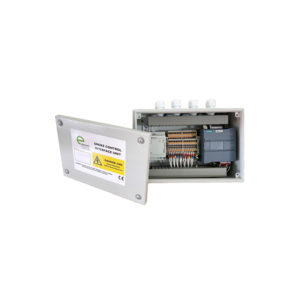
Interface Panel
£1,028.91 / £1,234.69 incl. VAT Add to basket -

Damper interface panel 230V output module
£43.00 / £51.60 incl. VAT Add to basket
What are Fire & Smoke Dampers?
Generally speaking, there are two types of dampers:
- Fire dampers, designed to only prevent the spread of fire;
- Fire & Smoke dampers, designed to stop both smoke and fire from spreading in a building
What is the purpose of a Fire Damper?
The core function of a fire damper is to prevent fire from spreading through a building’s ductwork should an accident happen. Commonly, fire damper devices will have a fusible link, which triggers their function. Upon exposure to a certain temperature, the link melts, thus closing the damper and stopping the fire from spreading.
As technology has evolved, automatically operated fire dampers are becoming more and more common. These fire damper systems allow for a building’s fire alarm system to be connected to automatic fire dampers and automatically triggered in the case of an accident.
What is the purpose of a Smoke Damper?
Similarly to fire dampers, the core purpose of a smoke damper is to control the spread of smoke in the air handling system of a building, such as a heating, ventilation, and air conditioning (HVAC) system.
When the smoke detector system in a building detects smoke, it sends a signal to the smoke damper, which then automatically closes to block the flow of smoke through the air handling system. This helps to contain the fire and prevent it from spreading to other areas of the building. Smoke dampers are an important part of a building’s fire safety system and are typically required by building codes in many jurisdictions.
What are the benefits of a Fire & Smoke Damper System?
A combination of fire & smoke damper is required for barriers that are rated for fire resistance while also being designed to prevent the spread of smoke.
Fire & smoke damper control systems are easy to install, commission, monitor, and maintain. They can be used for standalone installations of a single smoke and fire damper, or for networked solutions with hundreds of units with complex cause-and-effect scenarios.
Fire & Smoke Damper Configuration
For simple systems, the smoke control and fire damper modes can be selected by DIP switch settings. Networked settings are configured through a simple touchscreen without the need for on-site programming.
Fire/Smoke Damper Compliance
Our fire damper systems meet all the relevant standards and regulations:
- Low voltage and EMC Directives
- BS EN 61439
- BS EN 12101-3
- BS EN 12101-8
- BS EN 12101-9
- BS ISO 21927-9
How are Fire and Smoke Damper Systems connected?
The system can integrate directly with other building services installations e.g. BMS systems through a Modbus TCP/IP connection
Why fire & smoke dampers are used in HVAC
Fire & smoke dampers are used in HVAC systems to protect buildings and their occupants in the event of a fire. HVAC systems often have large ducts that run through the walls, floors, and ceilings of a building, and these ducts can provide a path for smoke and fire to spread throughout the building. Fire and smoke dampers are designed to close automatically when the smoke detector system detects smoke, blocking the flow of smoke through the ducts and helping to contain the fire.
In addition to preventing the spread of smoke and fire, smoke and fire dampers also help to protect the HVAC system itself. If a fire were to spread through the HVAC system, it could cause damage to the equipment and potentially compromise the integrity of the building.
Where do I need fire dampers?
Fire dampers are typically required in buildings in areas where smoke or fire could spread through the air handling system. These may include:
- Ducts that pass through walls, floors, or ceilings: Fire dampers are often required in ducts that pass through fire-rated walls, floors, or ceilings in order to prevent the spread of smoke and fire through the air handling system.
- Ceiling spaces: Fire dampers may be required in ceiling spaces, such as dropped ceilings or attic spaces, to help prevent the spread of fire through the air handling system.
- Mechanical rooms: Fire dampers may be required in mechanical rooms, such as HVAC equipment rooms, to help prevent the spread of fire and smoke through the air handling system.
Building codes typically outline the specific locations where fire dampers are required. The specific requirements for fire dampers may vary depending on the jurisdiction in which the building is located. It is important to follow these requirements to ensure the safety of the building and its occupants.
Do all buildings have fire and smoke dampers?
No, there are some buildings that don’t have fire & smoke dampers. This is down to the unique requirements of the space, the fire strategy in place, and the guidance of regulating authorities in the area where the building is located.
Our Fire and Smoke Damper Control Systems
Basic Fire and Smoke Damper System
Key features:
- Suitable for smaller installations
- A low-cost solution for hard-wired non-addressable systems
- Fully compliant with BS EN 12101:10 Smoke and Head Control Systems
Basic Fire & Smoke Damper system overview:
The EV-DCP-B Basic Damper Control system is a cost-effective and reliable solution for smaller damper installations utilising a hard-wired installation.
The system is available in 2 versions with a maximum of 15 and 30 dampers respectively. The system is compliant with BS EN12101-10 Smoke and Heat Control Systems, and Power Supplies. The panel receives interfaces from the fire alarm system to operate dampers to meet the building’s cause and effect. All dampers are monitored and the status is indicated on the front of the panel.
A key-operated switch is included on the panel for test and overrides functions. Volt-free signals are included for alarm, fault, override and test for remote monitoring.
Addressable Fire and Smoke Damper System
Key Features:
- Flexible modular system
- Suitable for the control and monitoring of smoke control dampers in all building types
- Features a user-friendly open protocol software for fast and effective commissioning
Overview:
A flexible modular system suitable for control and monitoring of fire and smoke dampers in all building types, especially complex multi-zone applications.
The system features a user-friendly open protocol software that enables fast and effective commissioning and the ability to easily incorporate changes to cause and effect through an intuitive touchscreen menu. Moreover, the addressable system can communicate directly with building management systems for monitoring and control and features a remote monitoring and test facility that ensures long-term safety for occupants post-installation.
Each FD and SCD is controlled by a damper interface unit that is suitable for both spring return and open drive closed dampers and can be used for monitoring manual fire and smoke control dampers. In addition, the system can control modulating FDs and SCDs with end switches and modulating damper position feedback.
The main panel can control up to 240 damper interface units and panels can be networked for large installations. The main panel is fully compliant with BS EN 12101-10 Power supplies.

